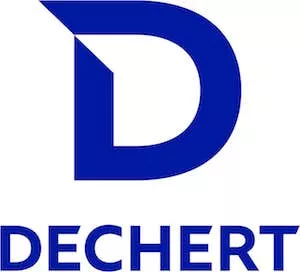- in United States
- with readers working within the Banking & Credit industries
- within Finance and Banking, Wealth Management and Tax topic(s)
Private Credit Summit | London
At Dechert's inaugural Private Credit Summit in London, Dechert's Jay Alicandri and Ken Young moderated a panel that brought together industry leaders from both the U.S. and Europe, including Joseph Buchheit from Bain Capital, Steve Kuppenheimer from Lord Abbett and Richard Sehayek from Ares Management. The panel explored some of the key success factors from the U.S. market, their applicability to Europe and emerging trends that could shape the future of private credit on both sides of the Atlantic.
Highlights from the panel Included:
The U.S. and European private credit markets have evolved over the past two decades in terms of both the range of credit investment products as well as the types of investors. During that period, banks' market share of middle market and large-cap transactions has decreased, as the private credit markets have scaled into a diversified credit solutions business where a varied range of investors seek multi-asset class products, characterized by structured, high-cash yielding assets that offer a stable NAV and returns.
To anticipate what's next in the European private credit markets, the panel explored how growth of the U.S. market has influenced the European markets, as well as identifying places where the European markets have charted their own path and may be showing the U.S. markets the way forward.
Growth of the U.S. market:
- Prior to the Global Financial Crisis ("GFC"), traditional banks played a significant role in providing capital to middle-market companies, and only about half of the necessary capital was supplied by any source.
- Post-GFC, the banks' share of lending fell to approximately 5-10%, creating a significant gap for private credit lenders to fill. That market opportunity, in turn, attracted alternative investors seeking opportunities with strong risk-adjusted returns.
- During COVID, there was a confluence of: (i) a low-yield environment where investors were hunting for returns; (ii) a private credit asset class that had delivered stable NAV and high yields through crises; (iii) several managers had become big enough to write large ticket sizes to borrowers; and (iv) those same borrowers losing access to the capital markets due to COVID. This combination of factors turbo charged expansion in the U.S. private credit market, which now serves not only middle-market companies but also large corporates.
How has growth in the U.S. private credit market influenced the European private credit markets?
Europe has faced some challenges as a result of the complexities of being a more diverse, multi-jurisdictional market. However, this difference also presents opportunities to deploy the strategies and practices developed in the U.S. over the past two decades for middle-market companies to grow liquidity solutions in the European private credit markets.
Areas where the European markets have advanced ahead:
- NAV finance – due to the less developed exit options for EU PE-backed portfolio companies, parties in Europe have relied less on the general M&A markets and more on customized and bespoke fund leverage transactions as alternative liquidity solutions for portfolio companies. A by-product of this is that the European markets are more comfortable with different exit strategies (for example, panelists have seen more NAV deals in Europe and for a longer period of time).
- Significant risk transfer transactions ("SRTs") – due to the regulatory regime in Europe, the panelists noted that SRTs are more frequent in Europe than in the U.S.
What's next for private credit in the European markets?
The tendency to talk about private credit as one market, one product, one capital base is shifting. What is called "private credit" is now many different ecosystems within the U.S., Europe and globally, with different pools of capital covering a variety of different asset classes from middle-market direct lending, asset-backed lending, fund finance to specialty finance.
In the current rapidly expanding private credit markets, key considerations for market participants include (1) investors' views of relative value across the various regional economies at any given point in time, (2) continued differentiation and innovation among sources of capital, including banks and insurance and (3) increasing opportunities for collaboration and innovation within the asset class. Therefore, what's next for private credit in the European markets appears to be largely dependent upon where investors see relative value across the various regional economies at any given point in time. Consequently, this may lead to more collaboration between private credit, private equity and special situations funds going forward.
If you want to hear more transatlantic perspectives on the European private credit market, join us at our next Private Credit Summit London!
The content of this article is intended to provide a general guide to the subject matter. Specialist advice should be sought about your specific circumstances.



